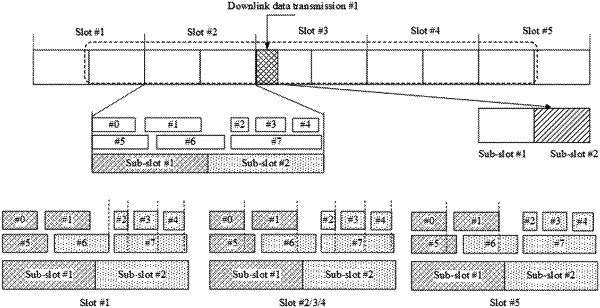| CPC H04W 72/0446 (2013.01) [H04L 1/1812 (2013.01)] | 20 Claims |

|
1. A wireless communication method, comprising:
determining a candidate opportunity set, wherein a quantity of candidate opportunities comprised in the candidate opportunity set is a maximum quantity of non-overlapping groups of data transmission opportunities comprised in a data transmission opportunity set, wherein:
the data transmission opportunity set corresponds to a first set,
the first set comprises one or more downlink sub-time units, and
the one or more downlink sub-time units correspond to a target uplink sub-time unit; and
performing one of sending or receiving feedback information in the target uplink sub-time unit,
wherein the feedback information comprises a hybrid automatic repeat request acknowledgement (HARQ-ACK) codebook corresponding to the candidate opportunity set,
wherein the data transmission opportunity set is a union set of data transmission opportunities corresponding to K downlink time units in a second set,
wherein the second set comprises a downlink time unit corresponding to all downlink sub-time units in the first set, a quantity of downlink time units corresponding to all the downlink sub-time units in the first set is K, and K is a positive integer;
wherein an end location of a data transmission opportunity corresponding to a downlink time unit in the second set is in a downlink sub-time unit that is in the first set and that corresponds to the downlink time unit; and
wherein the one or more downlink sub-time units included in the first set is determined based on one or more offsets, wherein a time domain offset of the target uplink sub-time unit relative to each of the one or more downlink sub-time units is one of the one or more offsets, and wherein the one or more downlink sub-time units respectively correspond to the one or more offsets.
|